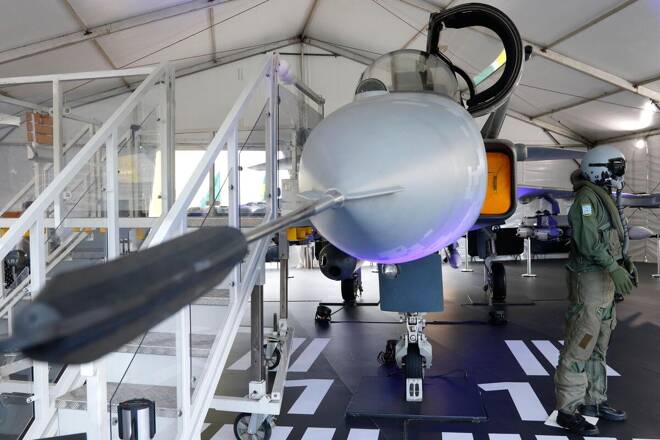Advertisement
Advertisement
US Capital Goods Orders Rise in February, but January Revised Down
By:
US manufacturing faces challenges as spending shifts to services and borrowing costs rise, while business equipment investment may decline again.
Key Takeaways
- US manufacturing has contracted for two consecutive quarters due to reduced demand for goods bought on credit caused by high borrowing costs.
- Spending is shifting from goods to services while the inventory cycle slows, and sluggish global growth and the dollar’s past appreciation are curtailing exports.
- Orders for electrical equipment, appliances, and components, and primary metals increased, but orders for computers, electronic products, and machinery decreased.
- Core capital goods shipments remained unchanged in February, and economist Andrew Hunter warns that business equipment investment may decline again in Q1.
- Durable goods orders decreased, and unfilled orders at manufacturers decreased by 0.1%, while inventories at factories rebounded by 0.2%, which is not good for factory production.
Durable Goods Report Summary
Orders for key US-manufactured capital goods unexpectedly rose 0.2% in February, although January orders were revised down to show a rise of 0.3%.
This suggests that business spending on equipment may struggle to rebound in the first quarter. Core capital goods orders rose 4.3% YoY in February.
US Manufacturing Contracts for Second Consecutive Quarter
US manufacturing has contracted for two consecutive quarters as borrowing costs reduce demand for goods bought on credit.
Spending is also shifting from goods to services, while the inventory cycle slows, and the dollar’s past appreciation and sluggish global growth curtail exports.
The Federal Reserve raised its benchmark overnight interest rate by a quarter of a percentage point on Wednesday but may pause further increases, following recent financial market stress.
Orders for electrical equipment, appliances, and components, fabricated metal products, and primary metals increased, but orders for computers, electronic products, and machinery decreased.
US Business Equipment Investment May Have Declined Again in Q1 as Core Capital Goods Shipments Remain Unchanged
According to the report, shipments of core capital goods remained unchanged in February after a 0.9% increase in January. Core capital goods shipments are used to calculate equipment spending in the gross domestic product measurement. Economist Andrew Hunter warns that assuming no significant weakness in orders in March, real business equipment investment may decline again in Q1. This decline could be even more significant due to recent events that have created a drag on investment, particularly for small firms that rely more heavily on bank financing.
The report also indicates that business spending on equipment contracted in Q4 2018, which contributed to GDP growth being restrained to a 2.7% annualized rate. Durable goods orders, including items like aircraft and toasters that are meant to last three years or more, decreased by 1.0% in February, following a 5.0% drop in January. The civilian aircraft category saw a 6.6% decline, following a 56.3% plunge in January. Transportation equipment orders fell by 2.8%, while motor vehicle orders declined by 0.9%.
Unfilled orders at manufacturers decreased by 0.1% in February, and inventories at factories rebounded by 0.2%. These figures do not bode well for factory production.
For a look at all of today’s economic events, check out our economic calendar.
About the Author
James Hyerczykauthor
James Hyerczyk is a U.S. based seasoned technical analyst and educator with over 40 years of experience in market analysis and trading, specializing in chart patterns and price movement. He is the author of two books on technical analysis and has a background in both futures and stock markets.
Latest news and analysis
Advertisement
